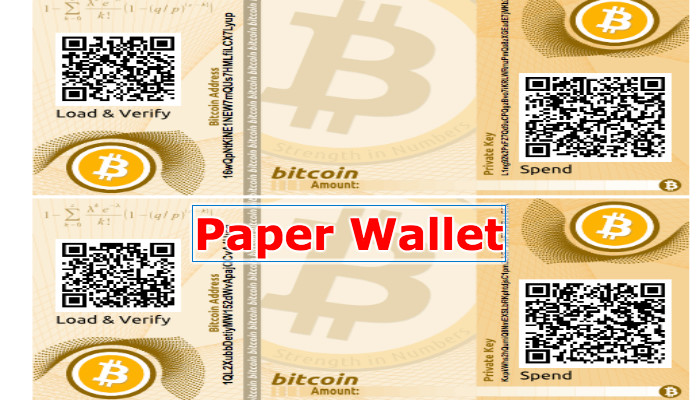The Artwork of Offline Storage: Mastering Paper Wallets
The Artwork of Offline Storage: Mastering Paper Wallets
Blog Article
In the age of Paper Wallet, security is paramount. With the increasing adoption of Paper Wallet and other digital assets, having security-conscious storage solutions is imperative. In the array of options, one of the oldest and reliable options is the Paper Wallet. Paper wallets are basically printing both your private and public private keys onto the surface of a paper piece, making it a physical storage for your digital currency. Even though it's considered to be outdated in the digital age however, paper wallets are an extremely popular option due to its simple design and security-focused options.
Designing a Paper Wallet is relatively straightforward. Many online platforms and applications allow users to generate easy paper wallets. The tools usually generate an array of QR codes. One code represents the public key, which you can share with others in order to get funds. Then, the other representing the private key, which must be kept secret as it provides access to your Paper Wallet holdings. Once you've generated them, print out the codes and make sure that your paper copy is securely stored, preferably in multiple physical locations in order to minimize the risk of loss or damage.
One of the most significant benefits for a Paper Wallet is its enhanced security. The private key is only as a physical object and isn't stored on any digital device, it's immune to online theft and hacking. This method of storage offline lowers the possibility of an unauthorized access to your money. In addition, paper wallets are not susceptible to malicious software, or vulnerabilities that are typically exploited cybercriminals. Insofar as the material contains your keys are free from physical hazards, such as flooding, fire or theft, your Paper Wallets remain secure.
In spite of its ease of use and the security advantages it offers, using an Paper Wallet also comes with specific risks and limits. One of the biggest problems is the physical brittleness that the paper has. The paper can degrade with time because of environmental conditions including heat, moisture, or fire, potentially making the wallet inaccessible. Paper wallets are also susceptible to loss or theft if not stored properly. In contrast to backups that are digital or physical wallets that can be quickly duplicated or replaced any paper wallet destroyed or misplaced may cause the destruction of the funds. To receive supplementary details please check my review here
Another consideration when using the Paper Wallet is the need for secure storage. In contrast to digital wallets that are able to be used from any place via the internet, paper wallets require physical access to get funds. This restriction can be beneficial and detrimental in that it provides secure offline access, however it requires careful planning and organization. The users must track their cash wallets in paper and ensure they remain accessible when needed while not compromising security.
Paper Wallets provide a distinct blend of protection and ease in the storage of a paper Wallet. They keep private keys safe and safe from the reach of hackers, paper wallets provide a robust solution for safeguarding digital assets. However, it is important to be aware of the dangers as well as limitations of using paper wallets, including the possibility of damage and theft. To conclude, a decision about traditional wallets as well as other options for storage is based on the individual's desires and tolerance to risk. While paper wallets may not be as convenient as digital wallets but they're still an option that is reliable for people wanting the most protection and control of their Paper Wallet holdings.
